5. Now Featuring a Multiplayer Mode
Sorry for making you wait so long, Tanabe-san.
That’s fine.
You were responsible for the mission of resurrecting games made by Genyo Takeda, Nintendo’s first game designer. Why did you do this project?
It all started from Next Level Games wanting to do this game.
You made Mario Strikers Charged16 with Canada’s Next Level Games, right? 16 Mario Strikers Charged: An action/soccer game released in September, 2007 for Wii.
Right. After we finished Mario Strikers Charged, we discussed what we would do next. I had heard that they wanted to make a new version of one of Nintendo’s properties, and since Punch-Out!! has been consistently popular in America, they said that they would really like to make a new version.
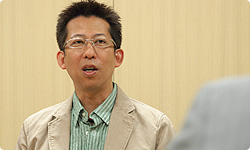
NOA has been asking for a new version of Punch-Out!! for a long time as well.
What was the first thing Takeda-san or Miyamoto-san said when you discussed this with them after returning to Japan?
First, I went to Miyamoto-san and he told me to go get permission from Takeda-san first.
Because he originally made the game. What was Takeda-san’s reaction?
I thought that I wanted to keep the development time short, so instead of thinking of a lot of new things, I just wanted to work with what was there. However, Takeda-san said, “Are you going to do anything new?”
Punch-Out!! was originally an arcade game, so it has simple elements that are meant to show the customer the fun the game has to offer within three minutes. If everyone enjoyed the simplicity of the game, that would be fine, but when I first heard this, I wondered if that would be enough now.
So you felt like, “Why do this now?”
That’s why I said, “You can change anything you want.”
Forget about the original, and do whatever you want. What did you think about this, Tanabe-san?
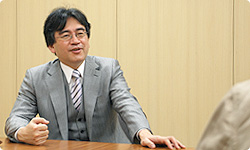
I didn’t know what to do. (laughs)
It’s hard to know what to do when someone says to do whatever you want. (laughs)
At that point, I thoroughly played the NES version. I realised that the degree of completion in the original is very high, almost to the point where you don’t need to add anything else. Unique opponents appear one after another and I thought the sensation of solving a puzzle by figuring out the timing of punches and the opportunities to strike - like when the opponent’s eyes sparkle - was done really well.
It was a forerunner of memory games.
I agree.
The gameplay is a balance between memorising the opponent’s patterns and reflexes.
The arcade version was over in three minutes, but I added the memorisation elements so you could play longer on the NES version.
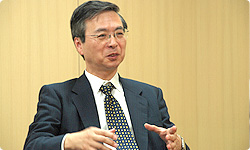
That’s why I thought I would pattern the Wii version on the NES version. The game system didn’t really need anything new. That’s why beating opponents the first time through is almost the same as on the NES. The characters are the same and only one new character has been added.
So people who played the NES version can easily fight if they remember the old way to beat the opponents.
Right. I think the first time through they can beat them easily. But the second time, it becomes much more difficult. Also, it is made so that beginners can get to the third person or so just by throwing punches.
The graphics have changed a lot though.
We took the original design and made it into 3D and rendered it using cell- shading. This really made the presentation stronger; especially the fighter introductions. For example, if it was Glass Joe…
The weak-chinned Frenchman. (laughs)
This was Next Level Games’ idea, but the first thing that comes to mind when people say French is fashion. So we had him appear in an elegant manner while drinking coffee in front of the Arc de Triomphe and holding up French bread in front of the Eiffel Tower. Then, it switches to the boxing ring.
There aren’t any French people like that!
Oh, yeah... (laughs)
(laughter)
Then in the rematch with Glass Joe , he is wearing headgear.
So you can’t hit his weak chin. (laughs)
That’s right. We use Wii’s improved display abilities to make the game even more visually appealing and fun, but…
But?
I kept remembering what Takeda-san said.
“Are you going to do something new?” The original creator’s words have a certain weight don’t they? (laughs)
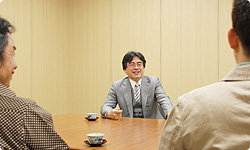
They really do. That’s why we decided to support the Wii Balance Board.
Compatibility with the Wii Balance Board worked better than expected, didn’t it? Changing your balance could make your body move left or right, or duck.
It was an interesting sensation, but when the input gets severe…
It might not fit in the sense of capturing Punch-Out!!, but I think it is successful in being interesting.
You can enjoy the feeling of actually boxing. I think I responded to Takeda-san’s proposition of adding something new by supporting multiplayer.
You can fight one on one.
Both players are Little Mac, but if you fill the Giga Mac Juice Meter all of the way, you can change into a giant version of Little Mac called Giga Mac .
You change into a really large character.
When this happens, you get a situation where you fight against a larger character like in single player. But even more, the punches become very powerful and trying to survive that is fun. We added an element where you freeze when you throw a punch and your opponent dodges it. If your opponent hits you while you are frozen, their meter for turning into Giga Mac goes up, so it creates a situation where you want to avoid throwing meaningless punches. That’s how these tactical elements were made.
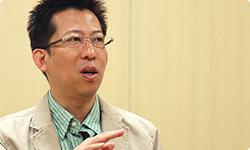
So more than a game of reflexes, it is a psychological game?
There are those elements. We were able to add elements for those who want to play the game at a deeper level. But, in the end, many times, once you get excited, the psychological match vanishes and it just turns into a brawl. (laughs)
(laughs)
When we put in those specifications, the debug team was having a great time. We asked NOA to do the debugging and apparently every Friday, they had tournaments. There were tournament charts hung up on the wall.
Are they working or playing? (laughs)
They all said it was a game they enjoyed to the end and I thought that I had managed to respond to Takeda-san’s challenge to add something new.